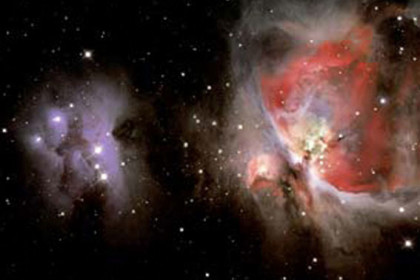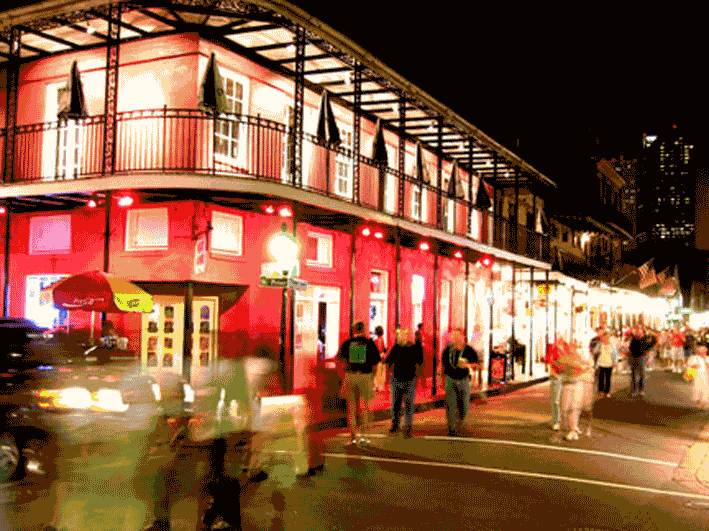
THE PLANETS
MERCURY: from day 1 just after sunset until mid-month.
VENUS: visible in the morning just before dawn in the constellation Taurus, with Aldebaran and Jupiter it forms a trio for the duration of the month.
MARS: visible in the first hour after sunset among the stars of Virgo, during the month approaching the Saturn-Spica duo.
JUPITER: observable in the morning in the constellation Taurus, rises just before dawn at the beginning of the month, but at the end of the month, it is 2 hours and 30 minutes ahead of lights at dusk-
SATURN: observed among the stars of the Virgo in the first hours of the night, at the end of the month it sets only 1 hour and 30 minutes after the last light of dusk sunlight.
URANUS: visible throughout the night with a very low declination for their transit in the constellation of Cetus.
NEPTUNE: ncreasing visibility, the planet is visible for most of the night with very low variation, whereas in the constellation Aquarius it locates stationed just over 3 degrees south of star Theta Aquarii.
A DOUBLE STAR EACH MONTH
For this July we will turn our instruments to the star most observed but least studied:<0} I’m referring to the alpha of Ursa minor or of the “small wagon”, more known as North Star. Its utility is in the equatorial station, but because of its dim light it is not in high esteem by amateur astronomers. This star of second magnitude has served navigators exploreres and armies to help navigate since ancient times, because for the people of the northern hemisphere, the sky rotates around it.
The North Star is about 1600 times more luminous than the Sun and is about 357 light years away from us; its radius is 35 times of that of the Sun, its spectrum is F type because of which the North Star is a giant yellow star. During spectral observations the North Star had a nice surprise in store for us: at a distance equal to that which divides us from Saturn it rotates around a companion mag.8.8. Observing this attractive pair of stars with my 102 mm fluorite, I notice the difference in colour between the two, the main one is yellow and the secondary is blue, both surrounded by sharp diffraction lines, no doubt about it … this once again shows us how the universe is full of beauty, really a nice pair of stars.
Between Beta and Gamma Lyrae, even a good pair of 20×80 binoculars shows a faint “star” of greenish colour, unmistakable with numerous stars that are part of the background in the field of view of the eyepiece. Just an ordinary telescope of 114mm diameter is enough to notice the so called “Ring Nebula”, which is M57. The telescope will show an elliptical green ring, quite uniform and dark inside, easily distinguishable even by inexperienced observers. Its diameter ( around 1 ‘), a combined with the apparent magnitude of 9.0, it seems like a bright and odd object.
In larger telescopes (20-30 cm of diameter) the particularities multiple in number: the ring becomes irregular, more light in some points, and of variable thickness. The interior is not as dark as the sky background, but is filled with a haze of the same colour as the ring, though much more subtle and diffused. The picture does not change much when using more powerful telescopes, it is just the inner nebulosity that gains more contrast and become much more evident. The central star, however, is difficult to observe using amateur instruments.
THE OBJECT OF THE MONTH: THE PLANETARY NEBULA M-57
The reputation of M57 is also due to a long tradition of observation in the past. One can say that all the great astronomers of the past centuries have handed down a description of the Ring Nebula, since their discoverer, A. Darquier, in 1779. Visually, it is not possible to appreciate the full extent of the planetaria, already in 1936 JC Duncan noticed that the nebula photographically stretched for almost 3 ‘, i.e. three times what could be measured visually. The central star is considered to be of varible luminosity, some classify it of being of magnitude +14 to +16, but all agree on the poor visibility of the star, whose light is partially obscurred by the inside haze.
A few arcseconds from the central star if there is another, about half a magnitude less bright, excellently visible with a 50 cm telescope.The central star, however, is very interesting: it is a bluish dwarf, and like the other stars of its type it is collapsed, having a density vastly superior to that of our Sun. Perhaps it’s interesting to mention the fact that its colour depends primarily on the surface temperature: 100000 K (for comparison, that of the sun is only 6000.
An upper limit should be 2000 light years, more plausibly, M57 is about 1300/1500 light years from us.<Since with the latter value of the distance, the planet would have a diameter of half a light year (but could be even thrice as much), equivalent to 5000 billion kilometres, and a total luminosity of the ring 50 times that of the Sun.<0} Since it was created by a cataclysmic event, it is reasonable to assume that M57 is an expanding nebula. In fact, some photographs taken more than half a century apart showed an apparent increase in its size, of about 0.3″.This value is much lower than what is measured spectroscopically (about 20 km / s); going back along the space that the planetary seems to occupy today, it is estimated that the explosion of the central star can be traced back to around 20000 years ago.<0}
CURIOSITY
On the inside of the constellation Eagle, easily visible all summer long, there is a Guinness Recorder star: Van Biesbroeck’s star. It’s the dimmest star actually known, which emits a subtle light of dark red colour. Van Biesbroeck’s star is more than half a million times fainter than our Sun, and if it were placed at the centre of our Solar System, we would see it a little brighter than the full Moon!
OTHER CELESTIAL OBJECTS OBSERVED DURING THIS PERIOD WITH A BINOCULAR
Globular Clusters: M13, M30, M92.
Open clusters:M11, M26, M4.
Planetary Nebulae: M57 (Ring of Lira), M27 (handlebars).
Diffuse Nebulae: North America (NGC7000) and Pelican, the Swan Nebula Veil (NGC6960-6992), M8 (Laguna), M20 (Trifid), M17 (Laguna), M16 (Eagle)
THE SUMMER
With summer, the season best for observing the sky arrives. The nights are warm and during the holiday season (for those who are lucky enough to go away) you can observe from the resort at the sea, or even better in the mountains. If you want, you can spend the whole night watching the rising and setting of the constellations as the hours pass The peculiarity of the summer night is the luminosity and richness of the Milky Way. A dark-adapted eye will be able to see this river of stars across the sky, starting from the constellation Perseus in the northeast horizon up to the great star clouds of Sagittarius and the Shield to the south. The celestial orientation in this time of the year is the referred to as Summer Triangle. This configuration is visible in the evenings of July and August:as you will easily notice, three bright stars. It is very useful when beginning the observation of the sky in this season to first identify the Summer Triangle, which lets us localise the Lyra, the Cígnus and the Aquila constellations immediately, from which we can then find all the others.
SUMMER METEORS
The meteor shower Draconidi occurs between the 27th and the 30th of June every year. The maximum is reached on 30 June with a rate of 10 meteors per hour, of low speed.In the period between 27 May and 29 July the Delta Aquarids meteor shower is visible, radiating to the south-east of Aquarius.In August you can see the richest meteor shower of the year:The Perseids, radiating in the autumn constellation of Perseus.<0} They are known in popular tradition as Tears of St. Lawrence, the saint whose feast falls on 10 August.
As always with meteors, visibility is best in the hours before dawn. That is the moment when the observer looks in the same direction as the Earth’s motion around the Sun.The visibility of the Perseids stretches from 27 July to 17 August, and the count can get around the maximum, which occurs on August 12, over 70 meteors per hour.
EVENTS OF THE MONTH
1 luglio 03:47 : Mercury at maximum East elongation (25°, 7) from the Sun
1 luglio 09:57: Venus 4°, 8 South-East of Jupiter (32 ° W)
1 luglio 14:07: Moon conjunction with Antares (Moon 4 ° north of Alpha Scorpii 6- 150 °
1 luglio 20:03: Moon at perigee (362,366 km)
3 luglio 20:51: Full moon
5 luglio 05:31: The Earth at aphelion (1.01668 AU)<0}
7 luglio 13:00: Maximum libration latitude. Visible lunar south pole (-6 °, 70)
7 luglio 15:54: Moon and Neptune in conjunction (Moon 5° 7, north of Neptune)
7 luglio 20:00: Maximum lunar libration in longitude. Lying on the western hemisphere ( +6 °, 55)
9 luglio 20:44: Venus in conjunction with Aldebaran (Venus 55′ north of Alpha Tauri – 38 ° W)
11 luglio 03:47: The Last Quarter Moon
13 luglio 18:46: Moon at apogee (404,779 km)
15 luglio 03:21: The Moon illuminated 16% occults Jupiter, magnitude -2.1, the disappearance takes place behind the illuminated edge, while the reappearance of the dark side occurs at 4:13
15 luglio 03:43: Moon and Jupiter conjunct (Moon 8′ south of Jupiter -46 ° W).
15 luglio 12:53: Moon conjunction with Aldebaran (Moon 4° north of Alpha Tauri 6 – 44 ° W).
16 luglio 11:36: Moon in conjunction with El Nath (Moon 7 °, 3 south of Beta Tauri – 32 ° W).
19 luglio 06:24: New moon.
21 luglio 01:00: Visibile il lembo orientale (-5°,15)<}85{>Lying on the eastern hemisphere (-5 °, 15).
22 luglio 00:10: Moon in conjunction with Regulus (Moon 6 °, 8 south of Alpha Leonis – 30 ° E).
22 luglio 01:00: Lying on the north pole ( +6 °, 65).
24 luglio 09:22: Mars in conjunction with Porrima (Mars 3 degrees south of Gamma Virginis, mv = 2.9).
25 luglio 01:23: Moon and Mars conjunct (5 ° south of Moon-Mars long.69 ° E); best observed before the Moon sets, at about 23:10 the previous day.
25 luglio 19:22: Moon conjunction with Spica (Luna 2 °, 1 south of Alpha Virginis long-81 ° E.
25 luglio 22:15: Moon and Saturn in conjunction (Moon 6 ° south of Saturn 9 long-80 ° E.
26 luglio 10:56: First Quarter Moon.
28 luglio 23:18: Moon conjunction with Antares (Moon 4 ° north of Alpha Scorpii 3.
29 luglio 10:28: Moon at perigee (367,315 km).
30 luglio 00:15: Maximum of the Delta Aquarids meteor shower of the south, observable from July 11 to August 22 (ZHR = 16.
31 luglio 01:18: The moon lit up to 94% occults the star SAO 187086, of magnitude 5.9, the disappearance takes place behind the dark side.
 English
English  Italiano
Italiano 



